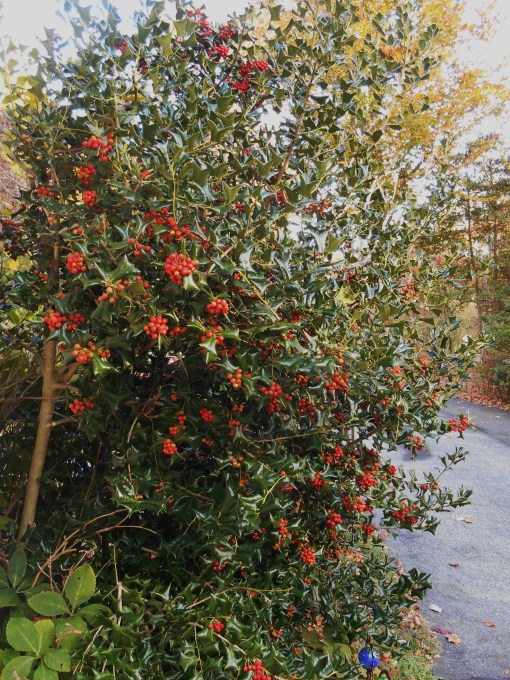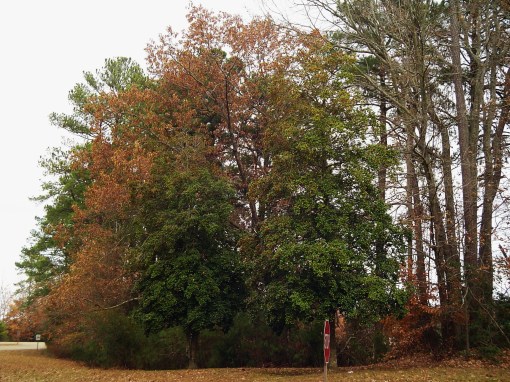This venerable holly stands in a median on the Colonial Parkway where one turns to visit the Jamestown Settlement exhibits. Not the archeological site, this is near the museum where Jamestown history is interpreted and where school groups eat their picnic lunches.
This gorgeous tree grabbed my attention during a drive down the Colonial Parkway earlier this week, because it is one of the first we’ve seen covered in bright red berries.
Here is the first sentinel of nature showing us that the winter holidays are on their way.
Holly and ivy remain iconic native plants for the winter holidays, partly because they remain green all winter long.
The red berries produced by the female holly tree reminded our ancestors of the sun, fire, warmth, and renewal. They still shine brightly on grey wintery days, even from underneath a blanket of snow; reminding us that the sun, and summer, will return.

These berries growing on a holly right beside our home are still in the process of turning from green to red.
Our Virginia woods hold many native holly trees. The birds help spread their seeds each year as they eat their berries, excreting the seeds far and wide.
We rarely notice the holly trees until late November when most of our deciduous trees stand bare. Then, we can see through the forest to the small army of holly shining in winter’s sunshine.
Many of these trees remain stunted. Growing at the base of oaks, maples, poplars, and pines, they rarely have a chance to fully develop.
Holly prefers full sun, which rarely reaches those growing in the forest.
We see these beautiful trees’ full potential when they grow on the edge of the woods, or remain, growing alone, like the venerable lady in the median.
Holly, one of the trees counted as “holy” by the Celtic druids, grows as either a male or a female throughout its life.
Only the female holly trees cover themselves in berries each year. And even the female trees don’t produce berries until several years into their lives.
We protect a small grove of seedling holly trees in our woods. They were only a few inches high when we came to this forest garden.
We watch them add height each year, looking forward to when the females among them bear their first berries.
A small holly also grew at the corner of our house, peaking out from behind a Hydrangea when we first arrived. It has grown now to a small tree, and we are happy to find it is a female covered in bright berries this year.
This is its first year to cover itself in bright fruit; a tremendous source of pleasure as we come and go each day.
The “grand dames” of holly trees may be found along the Colonial Parkway, mostly near Jamestown Island.
Protected at least since the road was completed as a part of the National Park in the late 1950’s, these holly trees look to be much older even than that.
Those growing near the road enjoy full sun year round, and remain one of the first of nature’s messengers that the winter holidays are close at hand.
Photos by Woodland Gnome 2013- 2014










